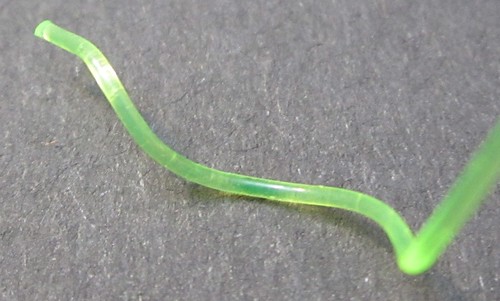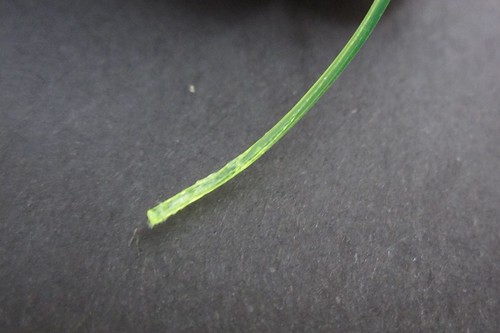The truth is that fishing line in good condition is very strong. I often fish with 4 pound test and am always amazed that when I get a snag I can pull myself and my kayak, about 250 pounds combined, with it. According to tests done by the IGFA, most monofilament fishing lines break at 50% - 100% of their rated strength. Braid is even stronger routinely breaking at up to 300% of its rated strength. That 20 pound test braid you use is probably closer to 60 pound test.
Then why does it break? If 4 pound test can pull a 250 kayak and its breaking point is actually much higher than 4 pounds, why can a 6 pound fish break it with no problem.
If your line breaks while you are fighting a fish, you can bet it was because of one of these seven reasons:
1. A poorly tied, or damaged knot.
Knots are the weakest point in your line. A poorly tied knot will slip, coming untied under pressure. A poorly tied knot can also weaken the line, reducing it strength by 50% or more. Damage to the knot by sharp rocks or teeth will almost guarantee a break off.
You can tell if your knot slipped by the end of your line. If it is twisted, then the failure probably happened at your knot.
 |
| Twisted line from a slipped knot |
Also, after a big fight or snag, cut your line and retie. This will prevent unseen damage to your knot from affecting you.
2. Nicked line.
A nick in your line can reduce its strength tremendously. It just makes common sense. A nick half way through your line will reduce its strength by at least 50%.
 |
| Severely nicked line |
 |
| Nicks right above a break off is a sure sign that your line was damaged. |
To find nicks in your line, simply run the line through two pinched fingers. Any roughness that you feel indicates a nick. This section of line needs to be cut out. Make a habit of testing the last 6 feet of line after ever catch or snag and the last 30 feet after each outing.
3. The line has reached its non-recoverable distortion point.
Mono stretches. A bunch. 50 feet of mono can easily stretch 5 feet during a hard fight. This is not necessarily a bad thing. This stretch keeps pressure on the fish while protecting the line from shock. It springs back to place once the pressure is relieved.
There is a point, however, that mono becomes too stretched out. When it reaches this non-recoverable distortion point, it changes on a molecular level. It becomes weak and brittle.
The problem is that it is almost impossible to tell if this has happened. The best thing to do is never pull on your line to break off a snag. This will definitely cause the line to reach its non-recoverable distortion point. Always cut 6 feet off your line after a break off of any type. Hopefully this will trim off any of the over stretched portions.
4. A poorly set drag.
Your reels drag is designed to give before your line does. If your drag is set too high it will apply too much pressure to the line, causing a break off. It is my experience that most people apply way to much drag pressure.
Your drag should be set to 25% to 30% of your line strength. So, if you use 10 test line, your drag should slip at about 3 pounds. You can easily test this by tying your line to a fish scale and pulling. Loosen the drag until it slips at the right pressure.
5. Fine abrasions on line.
Lots of tiny nicks, to small to be felt, can add up to a big reduction in line strength.
These abrasions are usually caused by your line rubbing against a rough log or rock.
Cut the damaged line out.
6. UV light damage.
UV rays damage everything, fishing line included. "Rotten" line is usually caused by UV light. This will weaken your line to the point that simply casting it will break it.
Store your reels and line out of the sunlight and change your line every season.
7. A smart (or lucky) fish.
A smart (or simply lucky) fish will try to wrap your line around an object. If it does this, your drag no longer affects the fish and the line is shorter, meaning less stretch. Plus, the line will be weakened by rubbing against the object it is wrapped around. This almost guarantees a break off.
The only thing you can do is try to keep fish away from structure when you are fighting them.
The solution to break offs
There are a few things you can do to prevent break offs. First, use a high quality fluorocarbon leader. Fluorocarbon is very resistant to abrasion. Second, inspect your line after each hookup or snag. If you find damage, cut it out. Third, tie good knots and retie often. Fourth, always cut off the last ten feet or so of line when you get home after each trip. This will remove unseen damage and keep your line fresh. Lastly, replace your line often.


